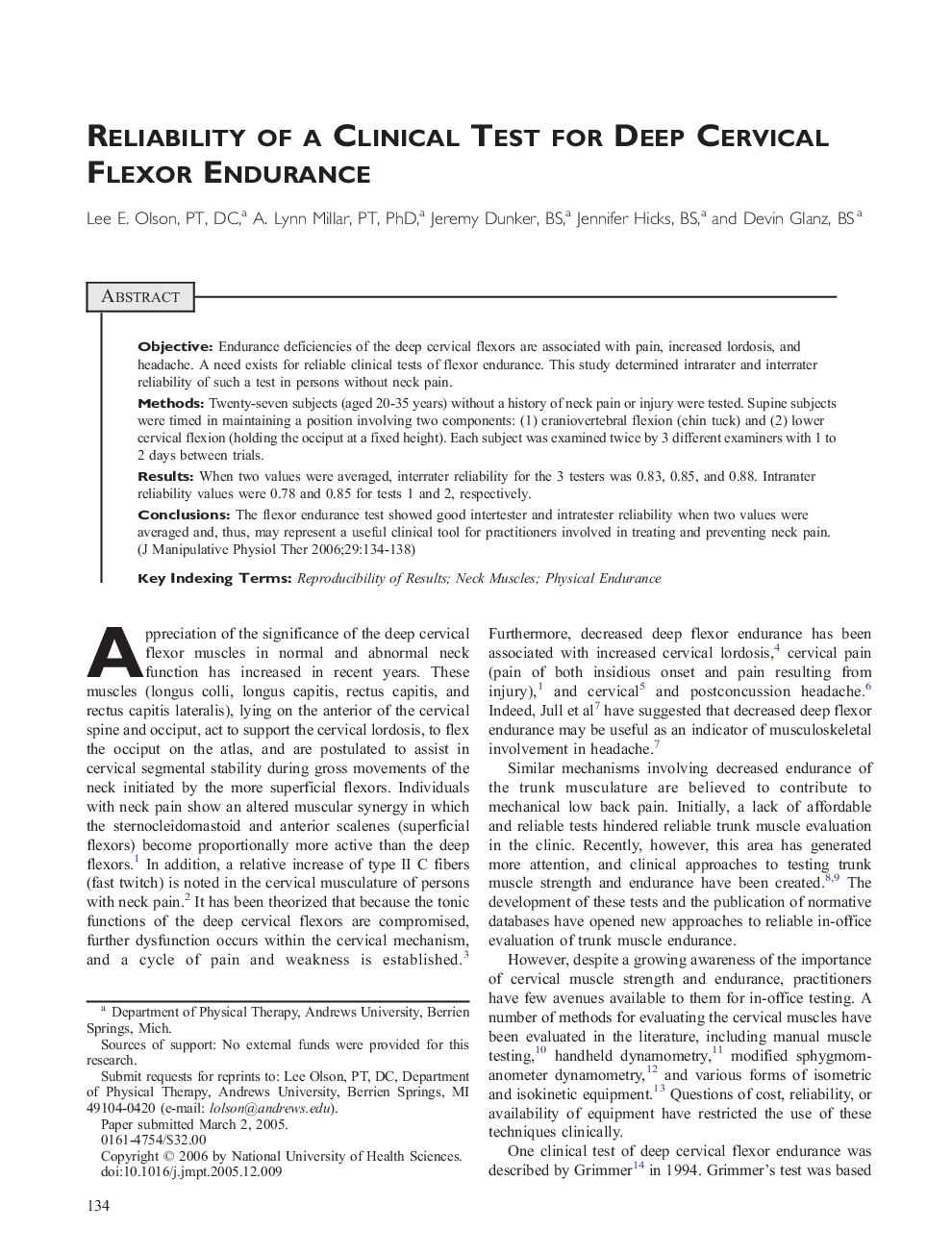| Article ID | Journal | Published Year | Pages | File Type |
|---|---|---|---|---|
| 2621632 | Journal of Manipulative and Physiological Therapeutics | 2006 | 5 Pages |
ObjectiveEndurance deficiencies of the deep cervical flexors are associated with pain, increased lordosis, and headache. A need exists for reliable clinical tests of flexor endurance. This study determined intrarater and interrater reliability of such a test in persons without neck pain.MethodsTwenty-seven subjects (aged 20-35 years) without a history of neck pain or injury were tested. Supine subjects were timed in maintaining a position involving two components: (1) craniovertebral flexion (chin tuck) and (2) lower cervical flexion (holding the occiput at a fixed height). Each subject was examined twice by 3 different examiners with 1 to 2 days between trials.ResultsWhen two values were averaged, interrater reliability for the 3 testers was 0.83, 0.85, and 0.88. Intrarater reliability values were 0.78 and 0.85 for tests 1 and 2, respectively.ConclusionsThe flexor endurance test showed good intertester and intratester reliability when two values were averaged and, thus, may represent a useful clinical tool for practitioners involved in treating and preventing neck pain.
